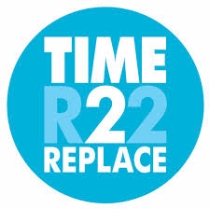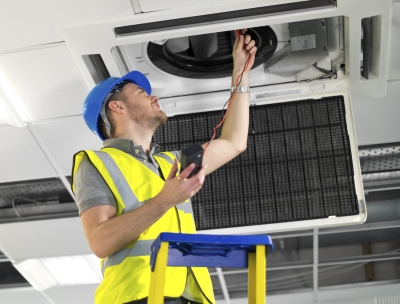R22 Replacement Options
Since 1st January 2015, it has been illegal to maintain or repair air conditioning systems that use R22 refrigerant.
However, this doesn’t restrict your replacement options and major manufacturers, including Mitsubishi Electric and Daikin, have developed flexible solutions to meet individual needs.
The main R22 replacement options available to you are:
- Total System Replacement
- Replace Outdoor and Indoor Units
- Use a ‘Drop-in’ Refrigerant
Total System Replacement
This involves replacing all parts of your air conditioning system, including outdoor and indoor units, pipework and electrical wiring. It ensures you have the most up to date equipment with the lowest running costs and is the best long term solution to the R22 Phase Out.
In some cases it’s impossible to re-use your existing components, making a full system replacement the only available solution. The downside to this approach is that it involves the highest initial capital outlay and increases the installation time.
If you have the resources to upgrade your entire system, it’s certainly worth doing. You will get the most energy efficient air conditioning system with the lowest lifetime costs. However, if your initial budget is limited, speak to your installer about the alternatives.
Replace Outdoor and Indoor Units
By reusing your existing infrastructure, including pipework, wiring and power supply, you could cut installation costs by up to 55% and minimise the impact on your organisation. This approach significantly reduces installation times and can come very close to matching the benefits of a total system replacement.
You will see major improvements to performance, energy efficiency and running costs, without having to make an overwhelming investment.
All major manufacturers offer partial R22 replacement solutions. This involves installing state of the art air conditioning units and integrating them with your existing infrastructure. It guarantees that your piping network is clean, fit for purpose and free from the banned R22 refrigerant.
Depending on the equipment you have in place, it’s even sometimes possible to replace the outdoor units only, which further reduces installation time and costs.
Partial R22 replacement solutions also give you an opportunity to upgrade your system, increasing the capacity or number of units. This approach brings your old infrastructure up to speed with your organisation’s current needs. We can work with you to design a system that is truly fit for purpose, saving you money by using the foundations you already have in place.
Use a ‘Drop-In’ Refrigerant
Drop-in refrigerants mimic the function of R22 in old systems without the legal implications or negative environmental impact. However, the term is somewhat misleading. In reality, it’s impossible to use a substitute refrigerant without complex re-engineering and re-commissioning.
Taking this approach will diminish your system’s reliability and performance, leaving you at risk of failure or unplanned downtime. Maintaining your ageing system will become increasingly expensive and many manufacturers don’t support alternative refrigerants due to the problems they cause.
Drop-in refrigerants should only ever be used as a short term measure. Even then, it’s vital they form part of a suitable replacement plan. While drop-in refrigerants may reduce your immediate capital spending, they are not cost-effective solutions to the R22 Phase Out and should be avoided where possible. Of all the R22 replacement options, drop-in refrigerants are the riskiest, and, in the long run, most expensive.
If you have an enquiry about the R22 Phase Out, including identifying R22 equipment, please call us on 01773 431060

